Yuheng Du
FastOcc: Accelerating 3D Occupancy Prediction by Fusing the 2D Bird's-Eye View and Perspective View
Mar 05, 2024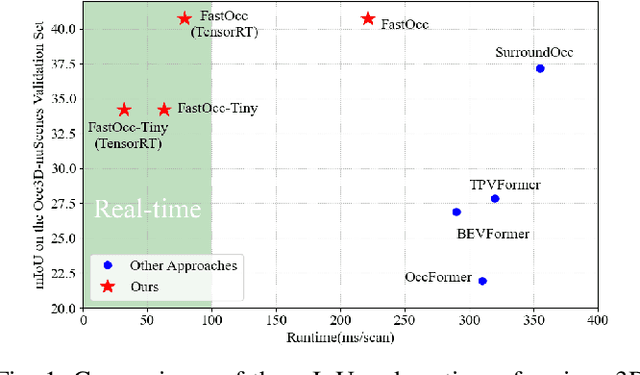
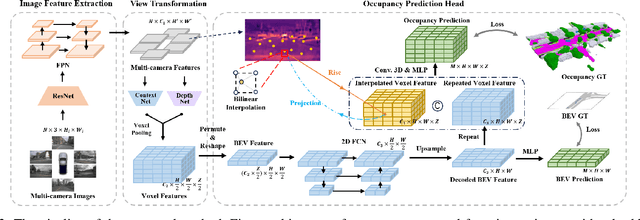
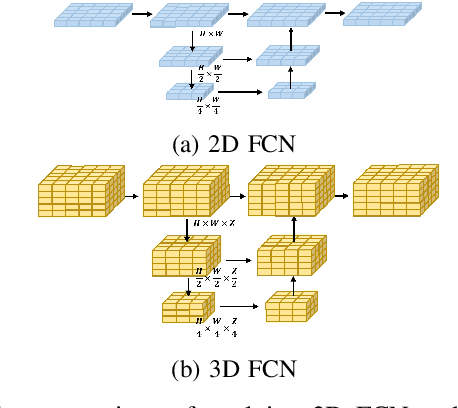
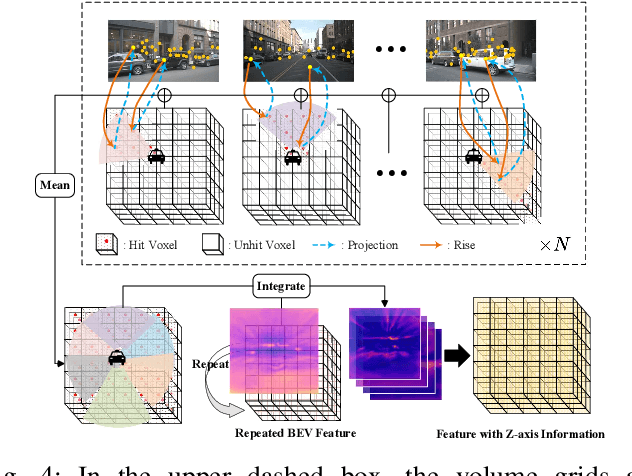
Abstract:In autonomous driving, 3D occupancy prediction outputs voxel-wise status and semantic labels for more comprehensive understandings of 3D scenes compared with traditional perception tasks, such as 3D object detection and bird's-eye view (BEV) semantic segmentation. Recent researchers have extensively explored various aspects of this task, including view transformation techniques, ground-truth label generation, and elaborate network design, aiming to achieve superior performance. However, the inference speed, crucial for running on an autonomous vehicle, is neglected. To this end, a new method, dubbed FastOcc, is proposed. By carefully analyzing the network effect and latency from four parts, including the input image resolution, image backbone, view transformation, and occupancy prediction head, it is found that the occupancy prediction head holds considerable potential for accelerating the model while keeping its accuracy. Targeted at improving this component, the time-consuming 3D convolution network is replaced with a novel residual-like architecture, where features are mainly digested by a lightweight 2D BEV convolution network and compensated by integrating the 3D voxel features interpolated from the original image features. Experiments on the Occ3D-nuScenes benchmark demonstrate that our FastOcc achieves state-of-the-art results with a fast inference speed.
Proactive Query Expansion for Streaming Data Using External Source
Jan 17, 2022Abstract:Query expansion is the process of reformulating the original query by adding relevant words. Choosing which terms to add in order to improve the performance of the query expansion methods or to enhance the quality of the retrieved results is an important aspect of any information retrieval system. Adding words that can positively impact the quality of the search query or are informative enough play an important role in returning or gathering relevant documents that cover a certain topic can result in improving the efficiency of the information retrieval system. Typically, query expansion techniques are used to add or substitute words to a given search query to collect relevant data. In this paper, we design and implement a pipeline of automated query expansion. We outline several tools using different methods to expand the query. Our methods depend on targeting emergent events in streaming data over time and finding the hidden topics from targeted documents using probabilistic topic models. We employ Dynamic Eigenvector Centrality to trigger the emergent events, and the Latent Dirichlet Allocation to discover the topics. Also, we use an external data source as a secondary stream to supplement the primary stream with relevant words and expand the query using the words from both primary and secondary streams. An experimental study is performed on Twitter data (primary stream) related to the events that happened during protests in Baltimore in 2015. The quality of the retrieved results was measured using a quality indicator of the streaming data: tweets count, hashtag count, and hashtag clustering.
Style Control for Schema-Guided Natural Language Generation
Sep 24, 2021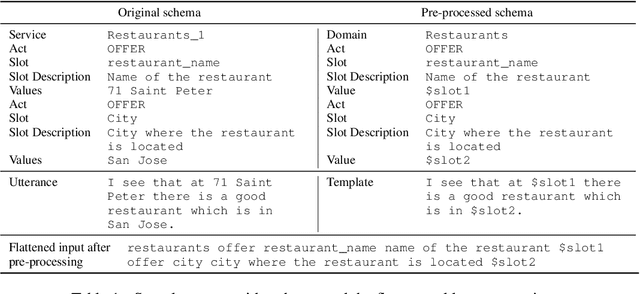
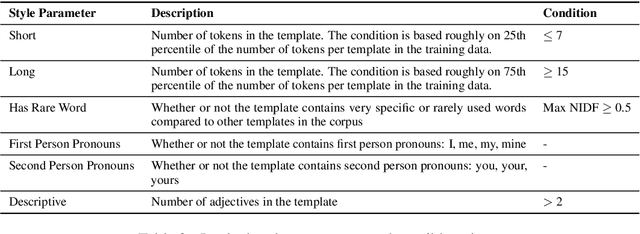
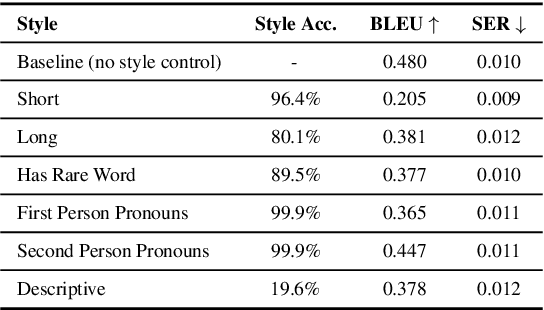

Abstract:Natural Language Generation (NLG) for task-oriented dialogue systems focuses on communicating specific content accurately, fluently, and coherently. While these attributes are crucial for a successful dialogue, it is also desirable to simultaneously accomplish specific stylistic goals, such as response length, point-of-view, descriptiveness, sentiment, formality, and empathy. In this work, we focus on stylistic control and evaluation for schema-guided NLG, with joint goals of achieving both semantic and stylistic control. We experiment in detail with various controlled generation methods for large pretrained language models: specifically, conditional training, guided fine-tuning, and guided decoding. We discuss their advantages and limitations, and evaluate them with a broad range of automatic and human evaluation metrics. Our results show that while high style accuracy and semantic correctness are easier to achieve for more lexically-defined styles with conditional training, stylistic control is also achievable for more semantically complex styles using discriminator-based guided decoding methods. The results also suggest that methods that are more scalable (with less hyper-parameters tuning) and that disentangle content generation and stylistic variations are more effective at achieving semantic correctness and style accuracy.
Schema-Guided Natural Language Generation
May 11, 2020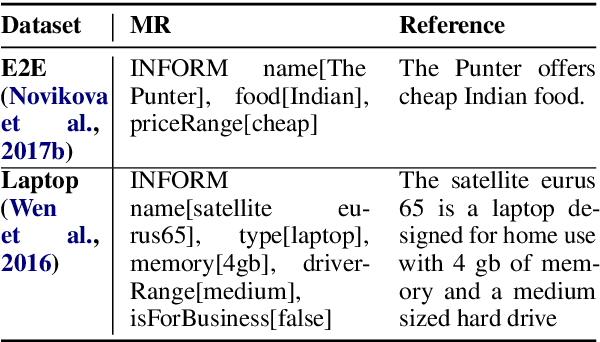

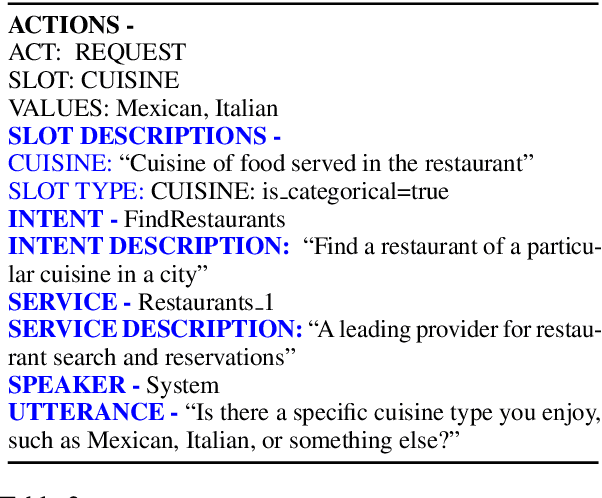
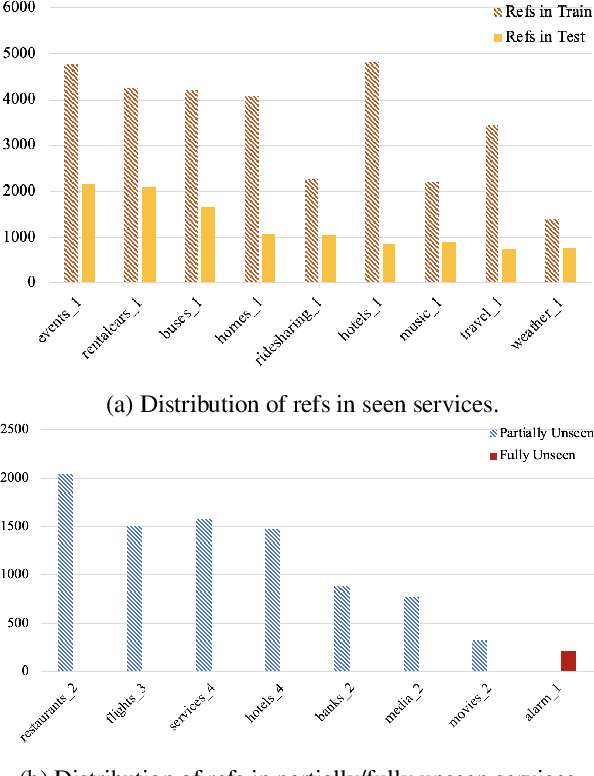
Abstract:Neural network based approaches to natural language generation (NLG) have gained popularity in recent years. The goal of the task is to generate a natural language string to realize an input meaning representation, hence large datasets of paired utterances and their meaning representations are used for training the network. However, dataset creation for language generation is an arduous task, and popular datasets designed for training these generators mostly consist of simple meaning representations composed of slot and value tokens to be realized. These simple meaning representations do not include any contextual information that may be helpful for training an NLG system to generalize, such as domain information and descriptions of slots and values. In this paper, we present the novel task of Schema-Guided Natural Language Generation, in which we repurpose an existing dataset for another task: dialog state tracking. Dialog state tracking data includes a large and rich schema spanning multiple different attributes, including information about the domain, user intent, and slot descriptions. We train different state-of-the-art models for neural natural language generation on this data and show that inclusion of the rich schema allows our models to produce higher quality outputs both in terms of semantics and diversity. We also conduct experiments comparing model performance on seen versus unseen domains. Finally, we present human evaluation results and analysis demonstrating high ratings for overall output quality.
 Add to Chrome
Add to Chrome Add to Firefox
Add to Firefox Add to Edge
Add to Edge